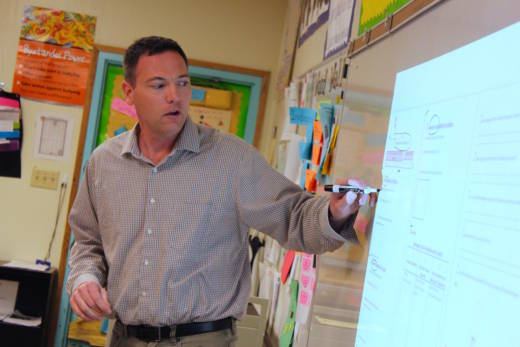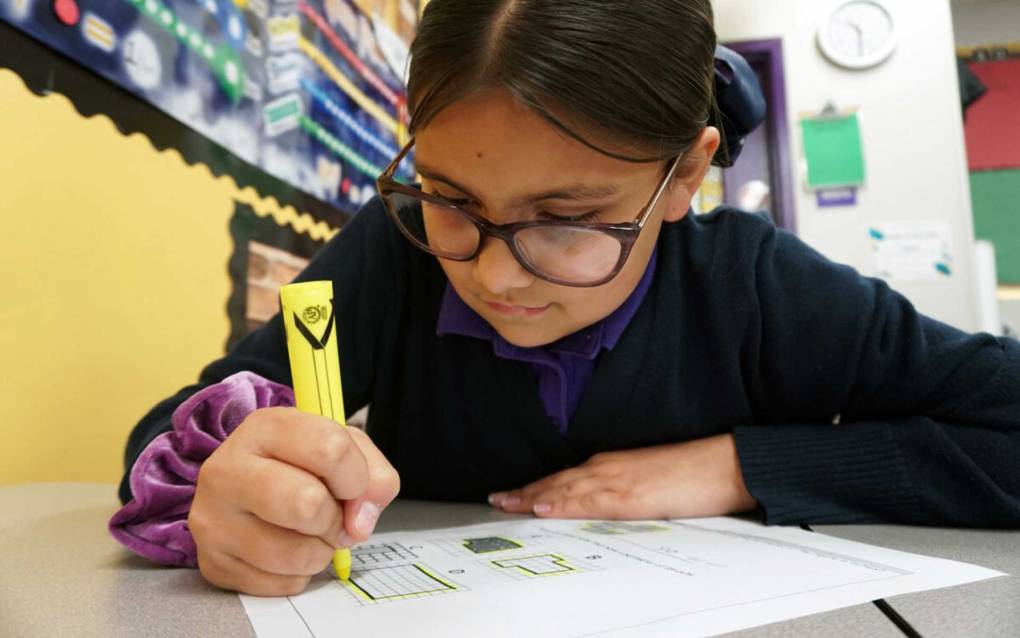Although most teachers in traditional public schools in California are required to obtain a teaching credential, state law grants charter schools “flexibility” in credentialing requirements for teachers of classes outside of the “core” subjects of math, reading, science and social studies, as well as “college prep” courses such as Advanced Placement.
Charter advocates and local school officials say the ability to expand limited applicant pools to include, say, professional artists, helps ensure a breadth of course offerings in areas such as dance, theater and music.
But charter school critics say the exception has been abused, and that standards need to be clarified to ensure that every student attending California public schools has a fully prepared and trained teacher. They point to new data showing some charters have high proportions of teachers who don’t meet state credentialing standards, even for some required core courses.
“When I entered the chair of the Assembly Education Committee, I assumed all school districts and charter schools believed that it was imperative that they have a credentialed teacher in their classrooms. And unfortunately, that’s not the case,” said Democratic Assemblyman Patrick O’Donnell of Long Beach, who heads the Assembly’s education panel.
“It’s about kids,” O’Donnell said. “The goal here is to ensure that every student attending a California school funded with public money has a qualified teacher in the classroom.”
To do that, O’Donnell introduced legislation toughening credentialing standards, part of a high-profile push to more closely regulate California’s 1,300 charter schools. The effort has focused most publicly on sweeping governance changes that could curb the growth of charters. But a key piece of legislation also includes a proposal to change who is allowed to teach in charters, which are mostly staffed by non-union employees.
Assembly Bill 1505, which narrowly passed the Assembly in May, would require that all California public school teachers hired after Jan. 1, 2020, whether district or charter, hold the proper credentials for the classes that they are teaching. If passed, the proposal would also affect how the state tracks teachers whose credentials don’t match the specific classes they’re assigned to.
Though the proposed language essentially grandfathers in teachers currently leading non-core classes in charters, some charter advocates and local school officials oppose the effort, saying it goes against the state’s intent that charter schools be innovative in their curriculum and instruction. They note that charter teachers already comply with many aspects of the credentialing process, such as fingerprinting and background checks.
Charter arts teachers, meanwhile, say that in their fields, credentialing mandates can rule out good teachers.
Williams, the piano teacher, says she is as qualified to teach music as someone who is credentialed through the state, “if not more, because my experience compounds on top of my training and education.”
“I would love to continue teaching music in the charter schools because I’m good at it and I love it, and I’d be very sad if I was limited because I don’t have those credentials,” she said. “But what I do have is 30 years of teaching experience. What I do have is a long life of experience, and with my [academy] already up and running, I wouldn’t have time to go and get my credentials at this point.”
In California, appropriately credentialed teachers have obtained a college degree, completed a formal training program, proved mastery over the subject matter they’re teaching and have finished or are in the process of completing professional development specifically aimed at rookie teachers.
Carlos Marquez, the chief lobbyist for the California Charter Schools Association, said it’s “not unusual” for charters to hire teachers who are not credentialed but have specific professional expertise, such as artists, professional dancers or actors with Broadway experience.
Fernando Aguilar, principal of Creative Arts K-8, a San Francisco charter school, said the flexibility in current law has allowed his school to staff teachers in arts, theater, dance, music and visual arts — subjects he said don’t always fully align with the state’s credentialing structure. For example, he said, a person with professional experience as a dancer would be required to hold a credential in physical education under the traditional requirements.
Aguilar said he tries to hire teachers who have the appropriate credentials, and provides rigorous professional development for teachers who do not. Creative Arts K-8, he noted, has been recognized by the state for its arts programs as well as its efforts to narrow the achievement gap with the help of the credentialing flexibility.
“If you are able to prove that this is working for students, that they are being able to thrive in a situation like this, then I wonder why you want to stop that or hinder that at this point,” he said.
If the state were to remove the credentialing flexibility for non-core charter teachers, Aguilar added, “my concern would be, are we going to be able to run the same innovative programs at this high level moving forward?”
But Kathy Warren, a high school English teacher in the Novato School District, said professional expertise alone, even for teachers of non-core subjects, is not enough to successfully navigate “a very complex and oftentimes brutal profession.”
“Just because someone can wake up in the middle of the night and get an artistic inspiration and create a Van Gogh, doesn’t mean that he or she can then turn around into a classroom and successfully get kids to create the same level of mastery,” Warren said.
Whether California continues to allow flexibility in teacher credentialing requirements at charters will impact how the state counts misassignments — say, an English-credentialed high school teacher who is teaching math, or a teacher leading a special education classroom without the proper training.
Currently, the state annually examines such mismatches for only the lowest-performing schools, while monitoring the majority of district schools’ misassignments on four-year cycles — and not monitoring charter schools for this at all.
O’Donnell points to data from this monitoring program in arguing for stronger credentialing requirements at charters. An analysis of the misassignment bill, AB 1219, included data showing that in one unnamed district, 53% of charter teachers leading “core” classes were misassigned.
Of those misassigned charter teachers, about half held an Adult Education Teaching Credential, which only requires a high school diploma.
Collected by the state’s Commission on Teacher Credentialing, the data represented only that one district’s charters. But O’Donnell believes charter schools have altogether misinterpreted the state’s credentialing exception.
Too many charters, he said, are “trying to get around something that might take some time and might take up some resources, but ultimately is in the best interest of child safety and student learning.”
A report by the commission, which regulates teacher certification statewide, last year found a 16% increase in teacher misassignments in 2016-17 over the previous school year — with special education making up the largest share. Even so, misassignments accounted for less than 3% of the pool of nearly 70,000 teachers checked.
Michele Perrault, the commission’s director for the division of administrative services, said wherever the debate lands, these numbers matter.
“The idea is that every student in California classrooms should have a teacher who’s properly assigned, that is fully ready to meet their child’s needs the day they walk into that classroom,” Perrault said.
“Does that mean somebody who is not fully credentialed properly can’t do that? No. But the chances are if they are fully credentialed versus walking in without anything, they’re obviously going to have more tools in their belt.”
CALmatters.org is a nonprofit, nonpartisan media venture explaining California policies and politics.



